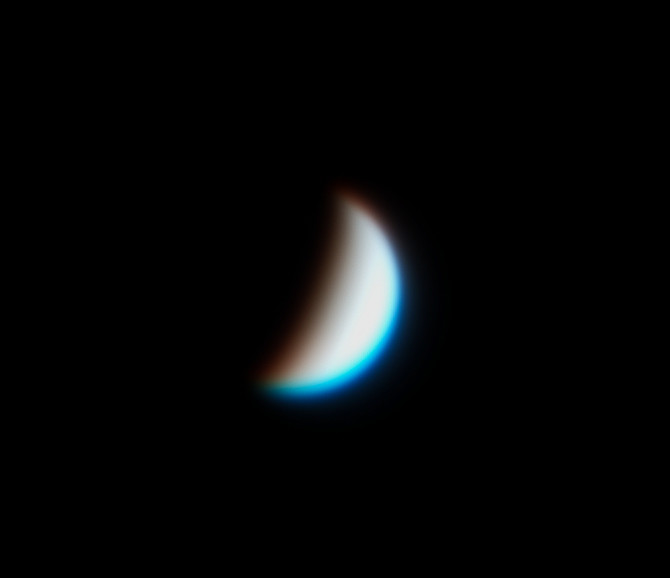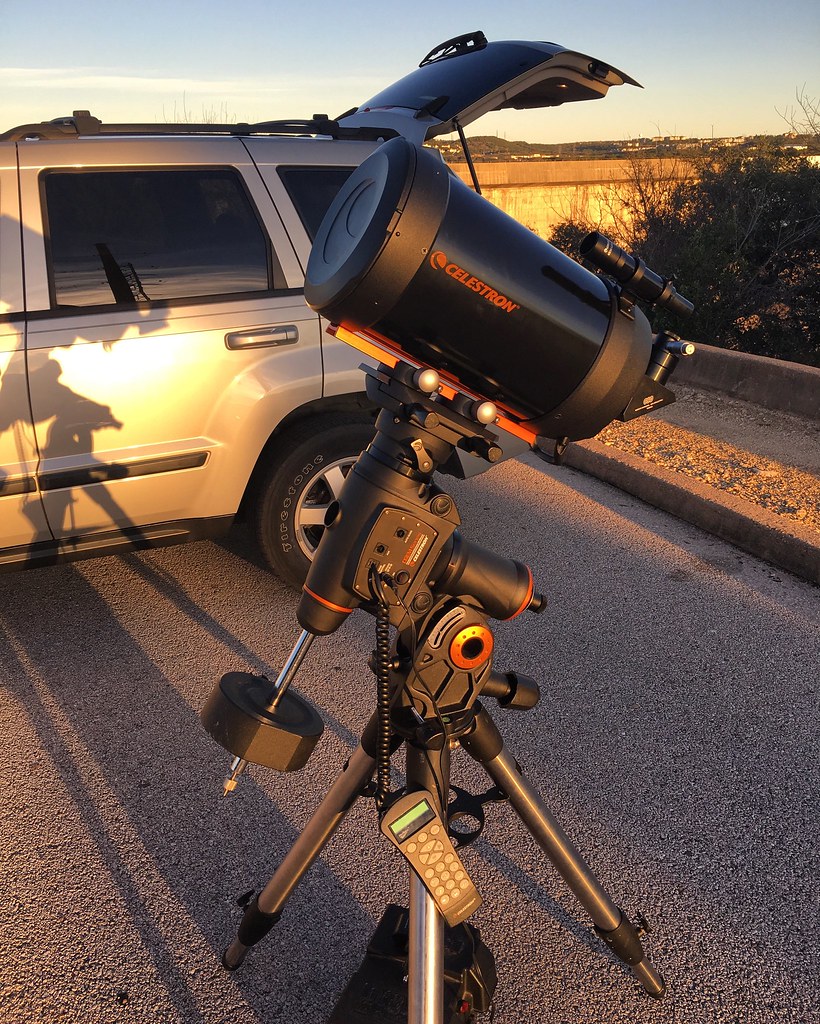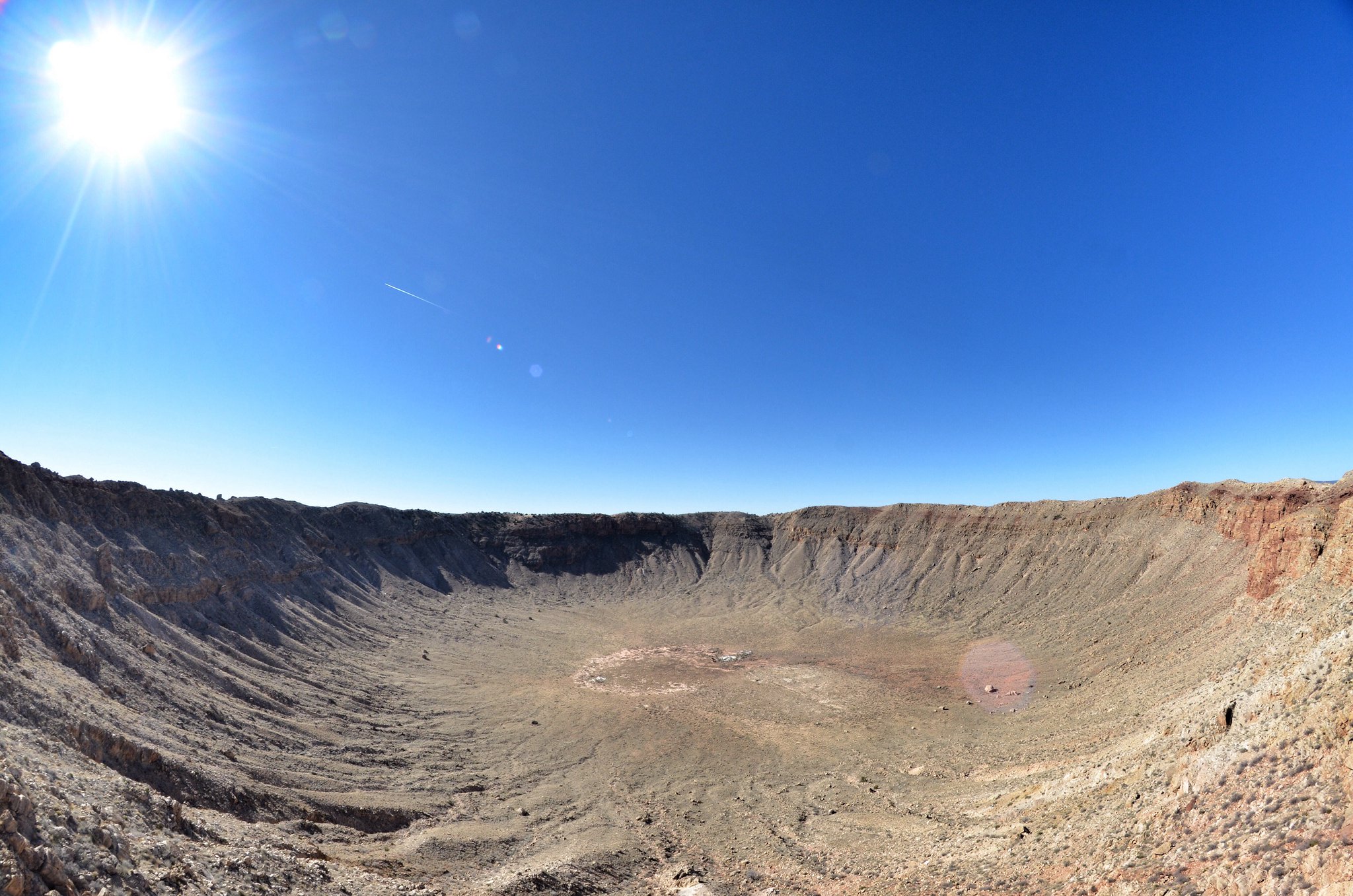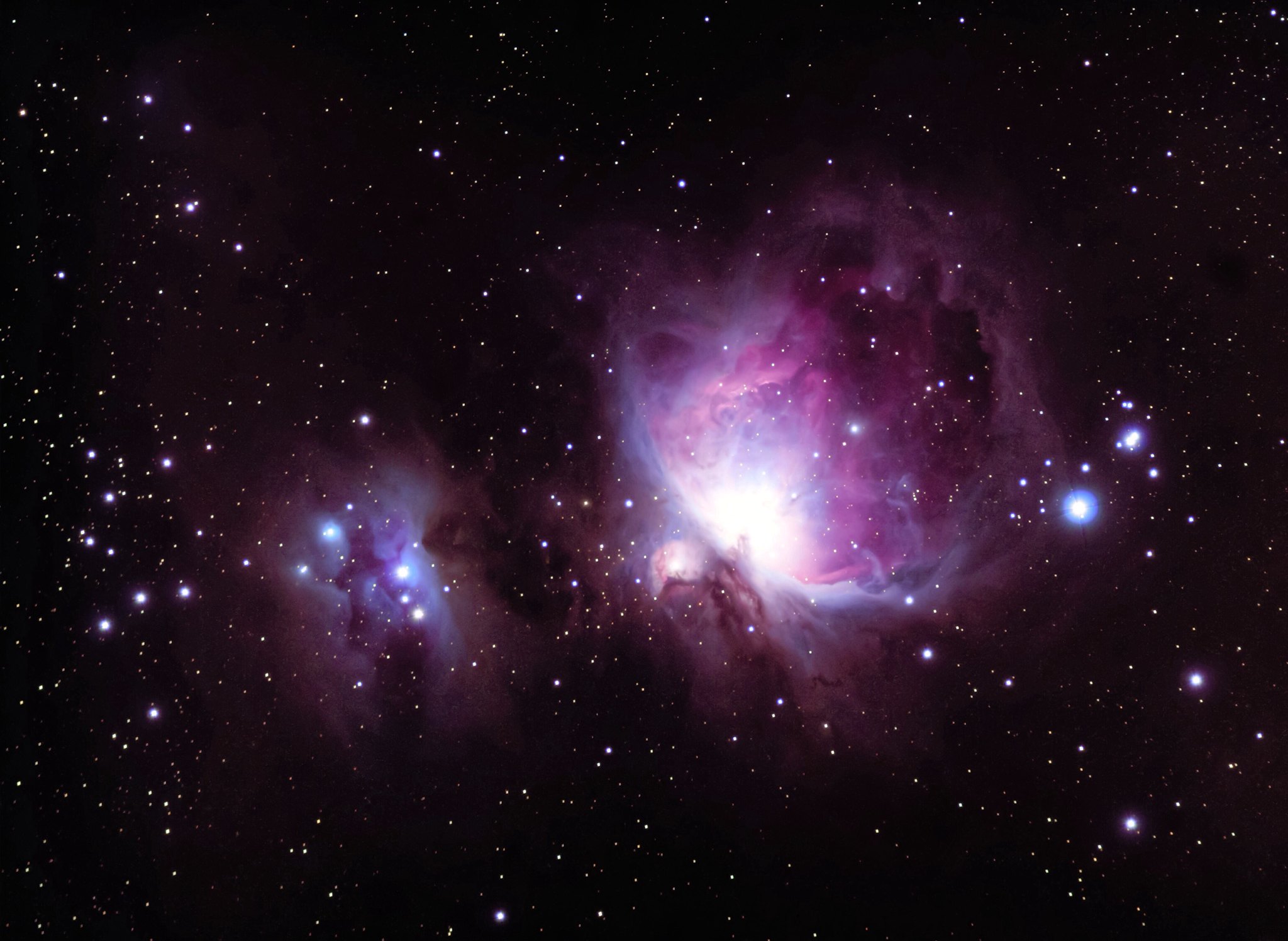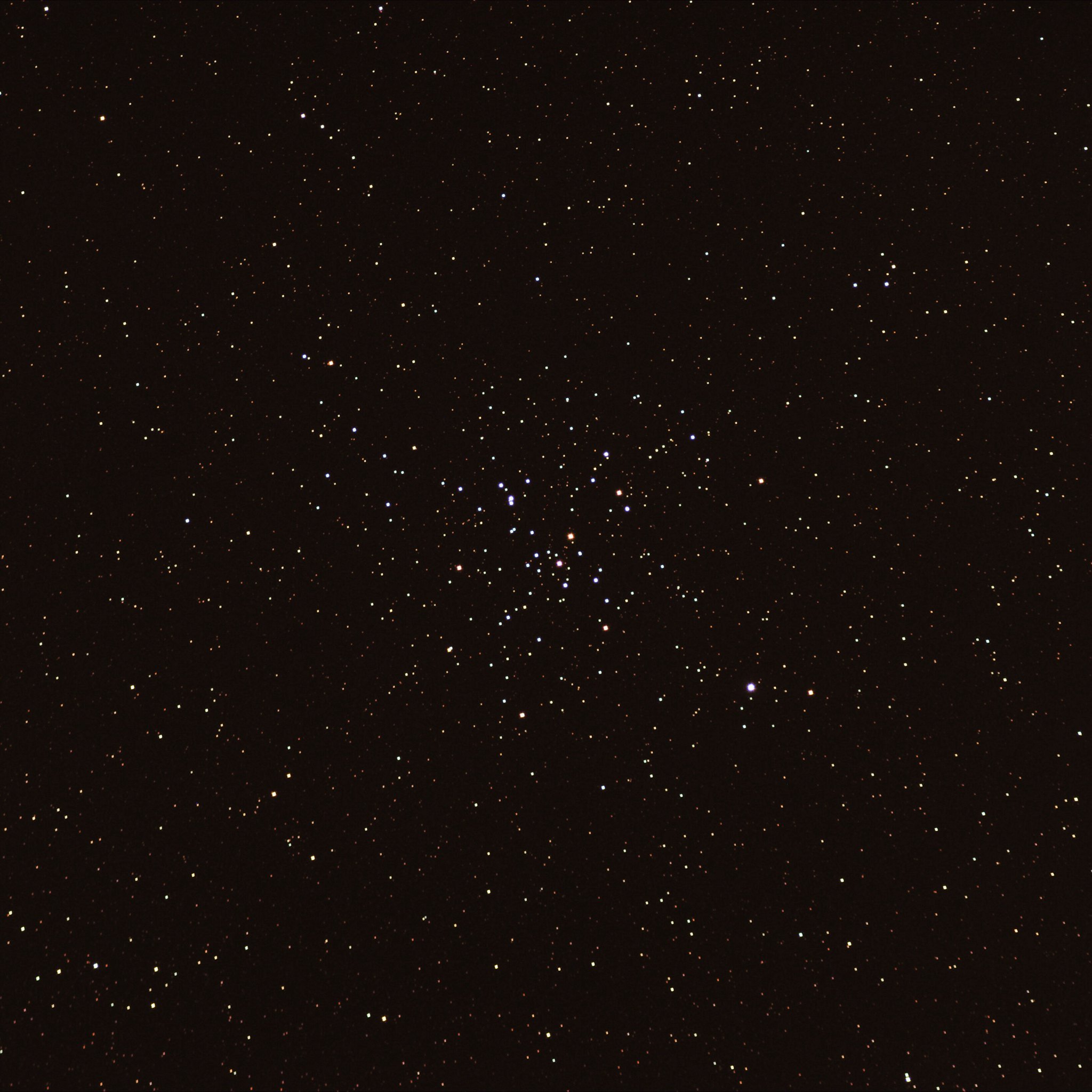Thursday, March 15, 2018
M81 and M82
M81 is on the right, lies around 11.7 million light years away and harbors around 250 billion stars. M82, on the left, is also called the "Cigar Galaxy" lies at about the same distance as M81. The two galaxies are seperated by about 150,000 light years.
Image Details:
* Imaging Scope: Astrotelescopes 80mm ED Refractor
* Imaging Camera: Nikon D7000
* Guiding Scope: William Optics 66mm Petzval Refractor
* Guiding Camera: Orion Starshoot AutoGuider
* Mount: Celestron CGEM
* Exposures: 9 * 8 minute lights, 9 * 8 minute darks, 30 bias frames
* ISO 1000
* Aligned and Stacked in Deep Sky Stacker
* Post-Processing Dynamic Photo HDR, LightRoom and Photoshop.
Wednesday, February 07, 2018
The Sword of Orion Region (2018 Attempt)
Anyway, the image below is a nice result!
Image Details:
- Imaging Scope: AstroTelescopes 80mm ED Refractor
- Imaging Camera: Nikon D7000
- Guiding Scope: William Optics 66mm Petzval Refractor
- Guiding Camera: Orion Starshoot Autoguider
- Light Frames: 20*5 minutes @ ISO1250 for the overall region, 20*1 minutes @ ISO1250 for the core
- Bias Frames: 20
- Dark Frames: 10
- Stacked in Deep Sky Stacker
- Merged in Dynamic Photo-HDR
- Tweaked in Adobe Lightroom
Friday, December 22, 2017
I Now Have an Observatory! (aka "Going Off the Deep End")
Part of the move involved purchasing an observatory. I looked around at various options and studied pros and cons of various designs while also thinking about my own needs and preferences. I originally considered a dome, but of the available options at my price range they were either too expensive or looked too much like port-a-loos (according to my wife/financial officer). I really ultimately preferred a roll-off-roof design because it offered great sky views and more room to walk around and store stuff (again, given my budget). Also, it would look more like a shed than a pure observatory, the latter looking more expensive and perhaps more attractive to would-be thieves.
I explored different options ranging from building it myself to turn-key solutions. I'm not handy at the best of times, so my confidence with respect to the former option was very low. Exploring turn-key solutions, I inquired with several dedicated observatory builders. Most were friendly, but prices shot up quickly when discussing the various options that I needed. I also approached local barn/shed builders. Most declined right off the bat, a few were interested and promised to draw up plans. While waiting for such plans, I got in touch with a few folks from the local astronomy club who had put together an observing site about 1.5 hours west of me called Stellar Skies. It's a great bit of land where folks can pay for a small portion of it, with concrete pad included, and utilize it as they wish (temporary scope setups on weekends to permanent observatory builds with remote access). They have a chap there who builds roll-off roof observatories and who is also a professional framer/builder. After a few email exchanges, he agreed to come out this way and build me a 10'*12' roll-off roof within my budget! Great guy, this Jarret character - he owns a massive Dob and has earned various Astronomy League certificates for visual observing. He well-and-truly understood the intricacies of building observatories and asked all the right questions while putting it all together. (While he was building my observatory, he launched a formal company which can be seen here - Heaven's View Observatories: https://hvobservatories.squarespace.com/.)
So, it took Jarret about a month or so put the observatory together. He had other jobs and rain interfered with the construction site access (when it rains on my property it becomes a massive mud fest!). But, he got it done and it was complete by Thanksgiving weekend. The beauty of his design is that he uses steel beams for the roof rail supports, with a cross-beam welded support system. This means no warping over the years as might be experienced with wooden rail support systems. Once he was done, I painted the exterior and interior. I also built a corner desk unit and added some cheap but strong plastic shelving from Lowes hardware store. The floor isn't done yet, and I'm exploring options for that but leaning towards some matt black horse stall padding available at my local Tractor Suplly Company (yeehaw!). I'll also add a solar power system to keep my marine battery charged, which powers both my scope and laptop during imaging.
It really is a luxury in this hobby to have your own observatory. To be able to walk out and be imaging without barely any setup time is amazing and great fun. My mount, the Celestron CGEM, has a hibernate mode, so you can effectively turn it off and on later and the mount will still be perfectly polar aligned. So, you really do have a ton of time to really focus on the image, including obtaining your dark, flat and bias frames.
Anyway, finished product pictures are below, and you can see construction images on my FLICKR site here.
Sunday, March 05, 2017
Catching up - Moon, Venus & Eclipse
Over the last couple of months, I have been testing out my new C8 OTA and New ZWO ASI120MC Camera combination. The skies here have been so-so, so I've been getting out when I can.
First, here's a pic of the camera on my C8 and CGEM configuration:
I'm using FireCapture freeware software to capture my video files from the camera. I like it a lot. It has different recommended settings based on the object you're shooting, and you can modify those settings as needed. Super-easy.
Here is a wide-field~ish shot of the moon:
Sunday, January 08, 2017
Rediscovering Planetary and Lunar
In that vein, I updated some astronomy equipment. Firstly, I acquired a C8 Celestron OTA second-hand. Came with a finder scope and terrific carrying case. This gives me a dedicated scope for lunar and planetary, and will later allow me to shoot more distant DSOs once I can attach my guiding setup to the scope.
Then, I was able to get a new lunar and planetary imager for Christmas. It's a ZWO ASI120MC camera, quite a step-up from the Philips Toucam I used all those years ago. You can see the full specs here, but the camera can also be used as an autoguider. Hmm. Image acquisition seems rather straightforward, using it with the FireCapture software which I like a lot (freeware!). It has different profiles for different planets and the moon built-in, so takes a lot of guesswork out of the various settings you need to make out in the field.
Monday, April 04, 2016
Another Arizona Trip
Wednesday, February 10, 2016
Astro Update!
Well, we finally got some clear skies over the past week, and I have been able to get out and observe. The conditions have been great, with a little wind that has added to the chill factor during these so-called winter months (temps have been a lot higher than normal this year). It had been a while since I have actually imaged, so I got out under the stars a couple of times and revisited some old friends.
Below are a couple of shots of the Sword of Orion region, with different processing workflows applied to each. I'm not sure which one I like better, and wish I could blend the two from a color perspective. My new Orion field flattener made a huge difference, though - nice round stars to the edge of the field.
- Imaging Scope: Astrotelescopes 80mm ED Refractor
- Imaging Camera: Nikon D7000
- Guide Scope: William Optics 66mm Petzval Refractor
- Guide Camera: Orion Starshoot Auto Guider
- Mount: Celestron CGEM
- Orion Field Flattener
- 10*5 minute lights
- 10*1 minute lights
- 10*5 minute darks
- 40 bias frames
- Stacked in Deep Sky Stacker
- Processed in GIMP
Below is the M47 cluster in Canis Major. I would like for my cluster images to have more "punch" - they lack impact somehow. Pretty sure its an exposure issue.
Image Details:
- Imaging Scope: Astrotelescopes 80mm ED Refractor
- Imaging Camera: Nikon D7000
- Guide Scope: William Optics 66mm Petzval Refractor
- Guide Camera: Orion Starshoot Auto Guider
- Mount: Celestron CGEM
- Orion Field Flattener
- 10*1 minute lights
- 10*5 minute darks
- 40 bias frames
- Stacked in Deep Sky Stacker
- Processed in GIMP
Friday, June 05, 2015
Interviewed by Breakthru Radio about Amateur Astronomy!
I had the delightful pleasure of being interviewed about amateur astronomy by DJ Jess Goulart about amateur astronomy a couple of weeks ago, and it went to "air" yesterday! We discuss subjects like astronomical equipment, choosing when and where to observe, exoplanets, and the distances of deep space objects. If you want to listen to me, as well as some cool new tunes, click on the link below:
Biology of the Blog - Phil Ostroff.
Enjoy!
Sunday, March 23, 2014
Lowell Observatory, Flagstaff, Arizona
We also took in a general lecture presented by one of the astronomers on staff. He gave a brilliant review of the Drake Equation which my whole family understood, as well as a beginner-level review of the constellations. All in all, a worthwhile visit!
Tuesday, January 07, 2014
Kicking off the New Year with some Stargazing!
My daughter and I took our Dobsonian scopes out this past weekend. We had a great clear night on Saturday, and the thin crescent moon sunk below the horizon shortly after we set up our scopes - as did the temperature! We were up at a popular observing spot, the Mansfield Dam in Austin, Texas, frequented by local astronomers and curious others. It had been years since I had been there but felt like some social astronomy. While the skies were clear and steady, the light pollution there was terrible. There has been so much development in the area that it's just not that good a spot anymore for serious observing. Sure, with my 12" I was able to snag some great views of the objects below, but the overall quality of the astronomy from that site has deteriorated a lot.
Having said that, it was definitely fun to hang out with other astronomers, including a few I hadn't seen in a while. One chap had a homebuilt 8" reflector and equatorial mount which offered great views. The old school, home-built stuff is brilliant. Another guy was field testing an astronomy video camera which produced very impressive results.
Anyway, my daughter and I hunted down various objects including:
- M31 Andromeda (Very hard to find visually/manually but got it eventually!)
- M42 Orion Nebula (Always a delight in the 12" Lightbridge - tons of nebular detail despite the light pollution)
- M35
- M37
- M38
- E.T. Cluster (Phone home!)
- Jupiter (Looked amazing, very clear, sharp cloud bands!)
Tuesday, December 03, 2013
Forest Trails of a Different Kind!
Saturday, January 21, 2012
Observing Session Time Lapse
Saturday, March 13, 2010
Astro Session 3/12/2010
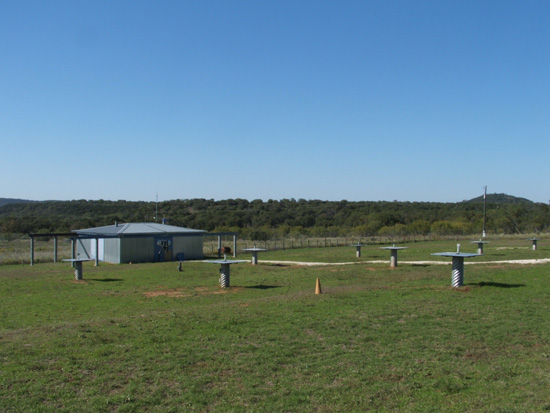 This past Friday night was fantastic. Clear skies, 3/5 seeing and 5/5 transparency. I drove out to the Canyon of the Eagles observing site in Central Texas with my two scope setups; my Meade 12" Lightbridge and astrophotography rig. Packed with star charts, cokes and snacks, I was set for a big night. I got there well before sunset, set up all my gear and ate dinner as the sun sunk below the horizon. Not a cloud in sight - excellent!
This past Friday night was fantastic. Clear skies, 3/5 seeing and 5/5 transparency. I drove out to the Canyon of the Eagles observing site in Central Texas with my two scope setups; my Meade 12" Lightbridge and astrophotography rig. Packed with star charts, cokes and snacks, I was set for a big night. I got there well before sunset, set up all my gear and ate dinner as the sun sunk below the horizon. Not a cloud in sight - excellent!I had two goals for the evening. Firstly, to try and tackle some astrophotography. I wanted to shoot the M81 and M82 galaxy group. I set up my guide camera with PHD Guiding and was happy to see that my laptop recognized the CGEM mount without any issues at all. It took about four minutes of so for PHD to get its guiding all sorted, and then I was ready to shoot away. I was taking ten minute exposures, so shot from about 9:15PM to 11:15PM. After that, I shot about six 10 minute exposures of M51 just fro grins.
While my camera was working away, I used the Lightbridge throughout the night to get ahead of my abysmal attempt on the Caldwell Catalog. Dad was ahead by two objects and I wanted to be the leader ;-). I have to say, 90% of the objects in this observing list are VERY hard to find, even under some pretty dark skies. I was going full manual too, just using a star chart, binoculars, my 8*50 finder and Lightbridge. In three hours I found six new objects, which I jotted down in my observing guide. One object, C25 (NGC2419) was a particularly difficult globular cluster (Magnitude 10.4) which I really struggled to find. I did so after an hour, but GOLLY it was hard! I was glad to finally find it, though. A few other objects I was able to find by binoculars. So, it was good to add to our list and get the momentum going again.
I am processing data for my captures and will post them here once I am satisfied with the results. The M81 & M82 snaps are hard to post-process without inducing noisy resulting images. I did take flat files but they came out rather rubbish-like so have decided not to use them. So, if I get decent results, I'll post them here.
A great night out in any case!
Friday, December 18, 2009
2009 International Year of Astronomy - Personal Review
2009 was marked as the International Year of Astronomy, and I believe this worked well to popularize and promote both amateur and professional astronomy overall. It seemed that professional organizations were more open this year, coupled with some very interesting astronomical discoveries ranging from the discovery of various new planets around other systems, the confirmation of the existence of water on Mars and our own Moon, as well as discoveries of a more immense nature surrounding black holes and dark matter throughout the cosmos. It's also been that the case that many amateur astronomy clubs around the world have conducted more public outreach activities to enhance and entice the general public's astronomical interests.
Personally, it was a pretty active year. Here are some highlights:
1. Published four articles regarding astronomy on this blog, which are more geared towards beginners. These articles were downloaded thousands of times, and I hope they are of good use to those who have read them! These articles include:
a. Astronomy Without a Telescope
b. Planning Your Observing Session: Choosing What to Observe
c. Planning Your Observing Session: Choosing When to Observe
d. Planning Your Observing Session: Choosing Where to Observe
2. Got more involved with public outreach. I attended four public outreach events through Central Texas and was responsible for running one event in particular!
3. We were graced with a relatively bright comet - Comet Lulin. This was the first comet I was able to capture! The image is here.
4. I got my kids into astronomy this year by allowing them to inherit my 6" Dob. They went out with me a few times and are now real pros at operating the telescope!
5. Took some of my best DSO images this year using my Nikon DSLR and LX200 with William Optics 66mm. These included the Sword of Orion, M51 Whirlpool Galaxy, M31 Andromeda Galaxy, M3 Globular Cluster and the M8 & M20 region near Sagittarius. I also learned a lot about techniques, including autoguiding and taking the necessary flat, dark and bias frames needed to produce better quality images. Next year should be a better year from an astrophotography perspective...
6. I got to observe a massive impact mark on the surface of Jupiter on July 21st, resulting from either a comet or asteroid impact. This was first observed by an amateur in Australia. An awesome thing to see!
7. Worked on getting more acquainted with the Moon. I feel that I can now accurately identify a lot of the Moon's major features.
8. I started a joint venture with my father in Australia to observe and log all Caldwell Catalog objects!
9. This blog made the Top 100 Astronomy and Space Blogs listing here - not too shabby!!
So, a busy astronomy year for me, and an extremely enjoyable one at that! Throughout the year I gained new knowledge about the hobby while imparting my existing knowledge to others - a nice balance.
How was your International Year of Astronomy?
Clear Skies,
Phil
Monday, November 09, 2009
Problem with Articles
Sunday, October 18, 2009
Finally, Some Astronomy!
I took both my LX200 for astrophotography, and my Lightbridge for visual work. I had a few targets that I wanted to revisit for AP work, and also wanted to start hunting down the Caldwell Catalogue objects. I found myself often going between both scopes while also just staring up at the nice dark sky. I bought a tarp cover to put on the ground, which worked out very well. The observing field is covered with burrs, and I was tired of getting pricked all night while moving around the scopes. The tarp on the floor did a great job of protecting me while I heard other astronomers curse as they suffered the onslaught.

The Orionid meteor shower was ramping up to its peak, which occurs in a few days time. Still, I think they were coming down at a rate of around 10-15 per hour, maybe more. Most were pretty ordinary, but several were quite bright and left short trails after them.
With respect to my hunt for Caldwell objects, I picked off a few objects, mostly around the Cassieopia region. I need to verify a few more and then will update my logbook. It is a great way to learn about objects outside of the Messier catalogue, and moreso a great way to learn your way around the sky.
Anyway, two nights out in the cold. I have lots of image data to go through and if any of it comes out nicely I'll post it to the blog.
Thursday, July 23, 2009
Why Now is a Great Time for Astronomy
For example, a few days ago at time of writing, an amateur astronomer in
Taking photos of the night sky is now more dramatically easier than it has been. Sure, there’s some money involved, but for even little money people can now take photos of our stellar neighbors easily and with great results. Digital cameras can be coupled to computer-driven scopes with relative easy, and amateurs who are just starting out can see near-immediate good results with images of the moon, planets and brighter deep sky objects. While I have a nice Digital SLR and a computerized GOTO scope, the very best photo I have ever taken was of the moon, through a 6” Dobsonian using my wife’s point-and-shoot digital camera – hand-held to the eyepiece! That picture now sits proudly on my desk at work. Even with the most basic of tools, most folks these days can capture lovely images of the skies above us at night.
To take imaging technology a step further, the ability to use modern imaging equipment to share your hobby with others either locally or around the world has also made the hobby that much more accessible. At a recent gathering of fellow astronomers, one chap had a 27” TV available which was hooked up to his scope while viewing the moon. It was a great way to share the experience. On several occasions, I have used my modified webcam, normally designed for taking images of the moon and planets, to share views of the moon from my scope here in the
My interests in astronomy stemmed from my grandfather. During family get-togethers at his home in
Yes, this is the International Year of Astronomy. But, I believe this is the People’s Time for Astronomy, and it doesn’t have to be limited to 2009. The telescopes available to the general public, the knowledge available on the internet and through current release books and journals, through to the astronomical community’s sheer desire to share their excitement for the night sky with everyone else makes the hobby accessible and enjoyable as never before. Perhaps we can take even a small amount of the enthusiasm being displayed during IYA2009 and keep sharing this lovely hobby of ours, utilizing the myriad of tools at our disposal.
Sunday, June 28, 2009
Austin Under the Stars - June 2009
We got there at around 7PM and stayed until just past midnight. The clouds were rather heavy during the day, but cleared away after sunset and we were presented with some pretty nice skies. Possibly 30 other members were there with their scopes, and several newbies with their scopes came along as well. Visitors made their way from scope to scope, asking lots of questions about the different objects they were looking at. Some brought blankets and picnics and sat near the scopes and simply looked up at the stars. It was rather pleasant.
I had a ton of folks come up and peer through the Lightbridge. It was hard to show people anything other than Saturn and the Moon - folks literally demanded to see those two particular objects and they were stunned with them both. Children and adults alike were really taken aback by close-ups of the the Moon, and it was funny to hear some of them utter sheer disbelief when I showed them Saturn.
As the moon set later in the evening, I opted to show the visitors some deep sky gems, namely M13 and M57. To my surprise, the people who visited and looked at these objects were quite impressed by them. M13 is a pretty object just visually, but when I explained exactly what I what they were looking at (composition and distance from us) they were flabbergasted, and I think that the information I provided gave them some real food for thought.
Another fun object was pointing out an iridium flare at around 10:35 PM or so. We gave the visitors a heads-up of the object, telling them where to look and at what time. It came in right on schedule and got very bright very quickly - I love these things! The whole field of visitors and astronomers erupted into applause once the event finished and the satellite went on its merry way.
My two ankle-biters had fun as well. Armed with a little bit of knowledge of the Moon and Saturn, they showed folks the two objects through their 6" Dob, giving their guests some good info, with maybe a little bit of embellishment along the way! ;-)
All in all, a very good night. The Society estimates maybe 500-600 people came through the event. My kids had a smashing time, and I had a lot of fun showing folks the sights of the night sky. I fielded lots of different questions ranging from stellar evolution, telescope types and capabilities, the search for ET through to the effects of light pollution and the moon landings and future missions.
A great experience for astronomer and visitor alike!
Wednesday, February 25, 2009
New Article: Planning Your Observing Session - Choosing When to Observe
This article is concerned with planning your observing sessions whilst taking schedule and weather factors into account. It may seem silly, but being able to effectively plan around both of these things will enable you to have more fruitful and relaxed observing sessions, for the most part.
Click on the picture below to download the article (you'll need a .PDF reader!).

The next article will be another "Plan Your Observing Session" article, but will be focused on how to choose a decent observing site.
As always, comments and feedback welcome!
Tuesday, January 15, 2008
Google Earth does Clouds!
 So, I was checking it out on my lunch break today and I noticed a weather section in the "Layers" toolbar on the right-hand side. One of the options is to be able to view cloud coverage. Look under Primary Database\Weather\Clouds. Select the option, and you will receive a current cloud situation as well as the ability to animate the image.
So, I was checking it out on my lunch break today and I noticed a weather section in the "Layers" toolbar on the right-hand side. One of the options is to be able to view cloud coverage. Look under Primary Database\Weather\Clouds. Select the option, and you will receive a current cloud situation as well as the ability to animate the image.Here's the scoop from the Google Earth help file:
"Since the 1960s, the capability to view Earth's cloud patterns from space has been made possible from two main types of environmental satellites, geostationary Earth-orbiting and low Earth-orbiting satellites. At least five geostationary satellites positioned around the equator are capable of providing depictions of global weather patterns, updated every hour. From their vantage point 36,000 km above the equator, the sensors onboard geostationary satellites can't quite 'see'the very high latitudes near the north and south poles. Since their orbit flies over the high latitude regions over the north and south poles typically every 90 minutes, low Earth-orbiting satellite imagery is well-suited to complement the geostationary imagery and thereby provide total global coverage. Even so, such satellite data merging is complicated by the fact that each individual satellite observation represents a single 'snapshot' of the cloud patterns, each taken at slightly different times, whereas the underlying clouds themselves are constantly moving and evolving.
In this depiction of global clouds, these satellite data are processed to discriminate clear (transparent) and cloudy areas. For cloudy areas, the brightness is approximated based upon the cloud top temperature relative to the surface temperature, as a proxy for the height of each cloud pixel. Due their location near the Earth's surface, low level clouds such as stratocumulus and stratus (fog) clouds may be poorly represented. For more information, visit the Naval Research Laboratory (NRL) Marine Meteorology Division."
 The image that is produced is quite interesting and useful. Check out the example to the left (click on it for full scale image). As you would expect, you get a close-to-real-time view of cloud activity over the selected area. At quick glance, it looks like you get coverage over most of the globe, although the animated feature is a bit quirky and seems to only work for the USA (?).
The image that is produced is quite interesting and useful. Check out the example to the left (click on it for full scale image). As you would expect, you get a close-to-real-time view of cloud activity over the selected area. At quick glance, it looks like you get coverage over most of the globe, although the animated feature is a bit quirky and seems to only work for the USA (?).Anyway, this could be a useful tool for planning your astronomical observing sessions, coupled perhaps with local weather forecasts and the Skyclock website.







